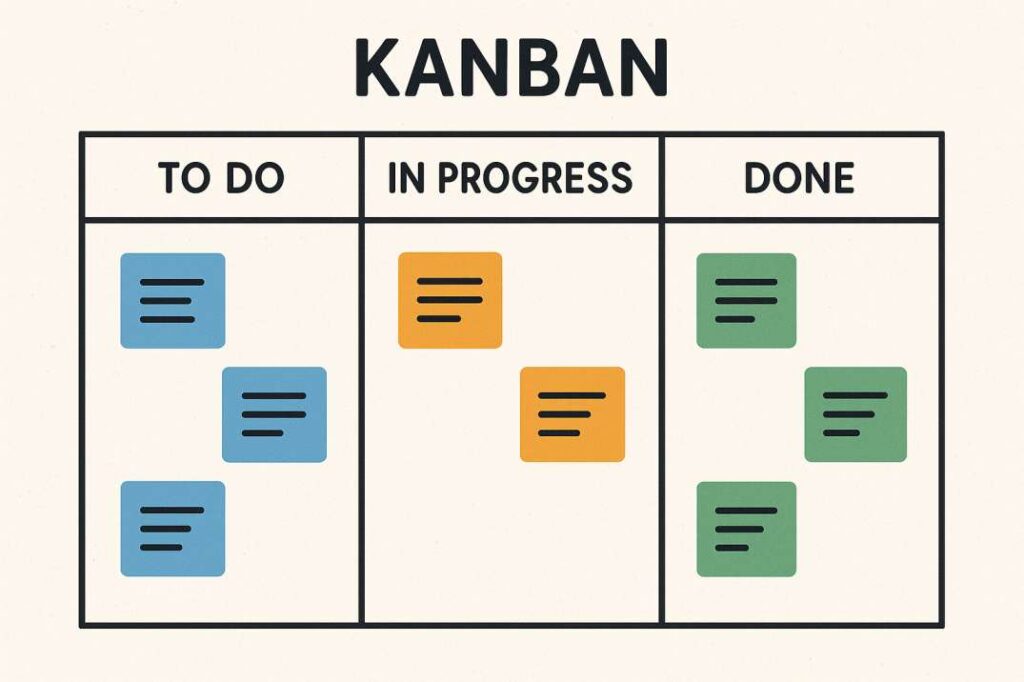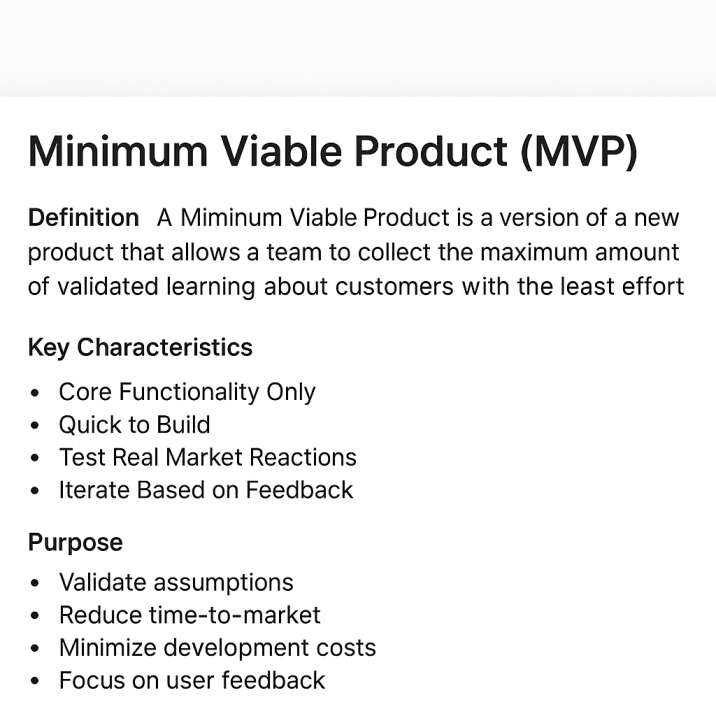
Agile execution practices encompass a wide range of techniques, methodologies, and approaches used by Agile teams to effectively plan, execute, and deliver value to customers in iterative and incremental cycles. These practices are based on Agile principles and values and are designed to promote collaboration, flexibility, transparency, and continuous improvement. Here are some key Agile execution practices:
- Scrum Framework: Scrum is one of the most widely used Agile frameworks, providing a structured approach to iterative and incremental product development. It includes key practices such as Sprint Planning, Daily Scrum, Sprint Review, and Sprint Retrospective to guide teams through the development process.
- Kanban Method: Kanban is a visual management method that helps teams visualize their work, limit work in progress (WIP), and optimize flow. Kanban boards, with columns representing different stages of work, allow teams to track their work and identify bottlenecks and inefficiencies.
- Lean Principles: Lean principles, derived from lean manufacturing, emphasize the elimination of waste, continuous improvement, and maximizing customer value. Agile teams apply lean principles to streamline their processes, reduce cycle times, and deliver value more efficiently.
- Iterative and Incremental Development: Agile teams follow an iterative and incremental approach to product development, delivering small, incremental improvements to the product in regular cycles. This allows for early and frequent feedback from stakeholders and enables teams to adapt to changing requirements and priorities.
- Cross-Functional Teams: Agile teams are typically cross-functional, with members possessing a diverse set of skills and expertise needed to deliver a product increment. Cross-functional teams promote collaboration, shared ownership, and collective responsibility for the success of the product.
- Continuous Integration and Deployment: Agile teams practice continuous integration and deployment, automating the process of integrating code changes and deploying them to production environments. This allows teams to release new features and updates quickly and reliably, reducing cycle times and time to market.
- Test-Driven Development (TDD): TDD is a software development technique where automated tests are written before the code is implemented. This ensures that the code meets the specified requirements and remains maintainable over time. TDD helps teams produce high-quality, bug-free code and fosters a culture of test automation and continuous testing.
- Pair Programming: Pair programming involves two developers working together at a single workstation, with one writing code and the other reviewing and providing feedback in real-time. Pair programming improves code quality, knowledge sharing, and collaboration among team members.
- Retrospectives and Continuous Improvement: Agile teams regularly conduct retrospectives to reflect on their processes, identify areas for improvement, and take action to address them. Retrospectives promote a culture of continuous improvement, learning, and adaptation within the team.
- Customer Feedback and Validation: Agile teams actively seek feedback from customers and stakeholders throughout the development process to validate assumptions, gather insights, and ensure that the product meets their needs and expectations. Customer feedback drives decision-making and prioritization, helping teams deliver value more effectively.
Overall, Agile execution practices are diverse and adaptable, allowing teams to tailor their approach to suit their specific context, goals, and constraints. By embracing Agile principles and values and leveraging these practices, teams can deliver high-quality products that meet the needs of customers and stakeholders in a dynamic and rapidly changing environment.
Minimum viable product (MVP)

The Minimum Viable Product (MVP) is a concept in Agile and Lean methodologies that refers to a version of a product that has the minimum set of features required to be deployed and tested in the market with real users. The goal of an MVP is to validate assumptions, gather feedback, and learn from real-world usage while minimizing time and resources invested in development. Here are some key aspects of the Minimum Viable Product:
- Core Functionality: An MVP focuses on delivering the core functionality or value proposition of the product, addressing the most critical needs of users or solving a specific problem. It includes only the essential features required to provide value to customers and achieve the desired outcome.
- Lean Development: The development of an MVP follows the principles of Lean Startup methodology, emphasizing speed, experimentation, and learning. Rather than investing significant time and resources in building a fully-featured product upfront, teams aim to develop and launch the simplest version of the product that can be tested with real users and validated in the market.
- Feedback Loop: The MVP serves as a vehicle for gathering feedback from users, customers, and stakeholders. By releasing the product early and often, teams can collect valuable insights, validate assumptions, and iterate on the product based on real-world usage and feedback. This feedback loop enables teams to make informed decisions, prioritize features, and refine the product to better meet user needs and preferences.
- Iterative Development: The development of an MVP is an iterative process, with multiple iterations or releases planned to incrementally improve the product based on feedback and insights gained from each iteration. Each iteration builds upon the previous one, adding new features, refining existing ones, and addressing issues identified through user testing and feedback.
- Risk Reduction: An MVP helps to mitigate risks associated with product development by validating assumptions early and identifying potential pitfalls or challenges before investing significant time and resources. By testing hypotheses and gathering data in the real world, teams can make evidence-based decisions and pivot or adjust their strategy as needed to increase the chances of success.
- Time and Cost Efficiency: Developing an MVP allows teams to minimize time to market and reduce development costs by focusing on delivering the most essential features first. By prioritizing features based on their value and impact, teams can avoid unnecessary complexity and scope creep, resulting in faster delivery and more efficient use of resources.
Overall, the Minimum Viable Product is a powerful tool for validating ideas, reducing risks, and accelerating innovation in product development. By starting small, testing assumptions, and learning from real users, teams can build better products that resonate with customers and drive business success.
